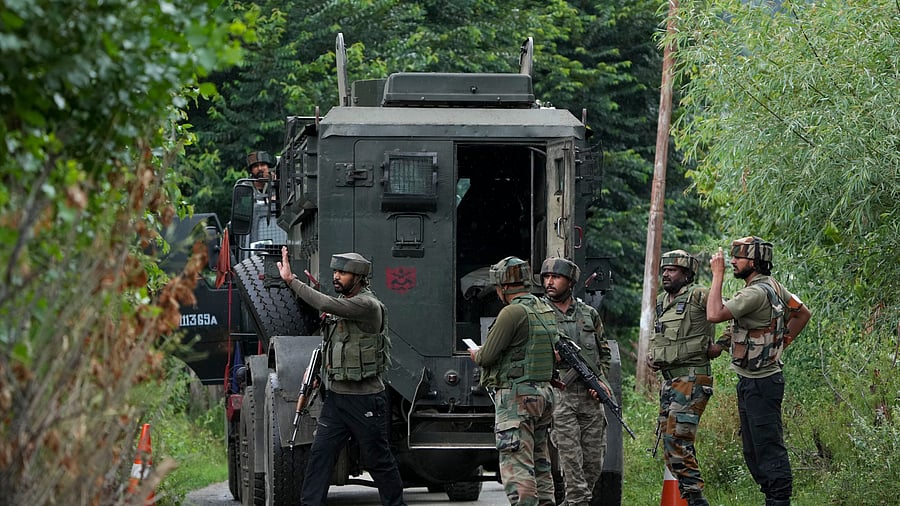
Security personnel during an encounter with terrorists at Ahlan Gagarmandu forest area, in Anantnag district of South Kashmir. (Representative image)
Credit: PTI File photo
Srinagar: India’s security agencies are keeping a close watch along the Line of Control (LoC) as Pakistan reportedly rebuilds terrorist camps destroyed during Operation Sindoor in May.
The developments highlight the continuing threat of militancy in Jammu and Kashmir, decades after the insurgency first erupted in 1989.
Sources said the rebuilt camps, located in Pakistan-occupied-Kashmir (PoK) and adjoining areas, are smaller and technologically advanced, designed to evade surveillance and survive airstrikes.
Facilities previously destroyed in Luni, Putwal, Tipu Post, Jamil Post, Umranwali, Chaprar Forward, Chhota Chak, and Janglora have been reconstructed with fewer than 100 terrorists in each, dispersing training infrastructure to minimize risk, they said.
Groups such as Lashkar-e-Taiba, Jaish-e-Mohammed, Hizbul Mujahideen, and The Resistance Front continue to exploit these launchpads to infiltrate Jammu and Kashmir and carry out terror activities. Security sources say the camps have full backing from the Pakistani military, ISI, and government, underscoring Islamabad’s role in sustaining cross-border terrorism.
IG Border Security Force (BSF), Shashank Anand, said: “After Operation Sindoor, we have accelerated the use of modern technology, including drones and artificial intelligence. We closely monitor all activity and coordinate with other agencies whenever suspicious movement is detected. Seasonal challenges, especially in winter, require dynamic patrolling and adaptive strategies.”
The resurgence of these camps comes against the backdrop of a 35-year-long insurgency that has seen thousands of lives lost and widespread disruption in the region. Analysts say Pakistan has historically provided training, arms, funding, and intelligence to terror groups, enabling them to adapt tactics and survive repeated Indian strikes.
“The insurgency has evolved over decades, and so has the support infrastructure across the border,” said a retired army official. “Operations like Sindoor deliver temporary setbacks, but the rebuilding effort shows that terror networks continue to pose a serious threat.”
With dense forests, rugged terrain, and winter-season infiltration routes, security forces remain on high alert, combining traditional patrolling with technology-driven surveillance to prevent cross-border terrorism. The renewed construction of terror facilities is a stark reminder of the evolving challenge that India faces in securing the region.